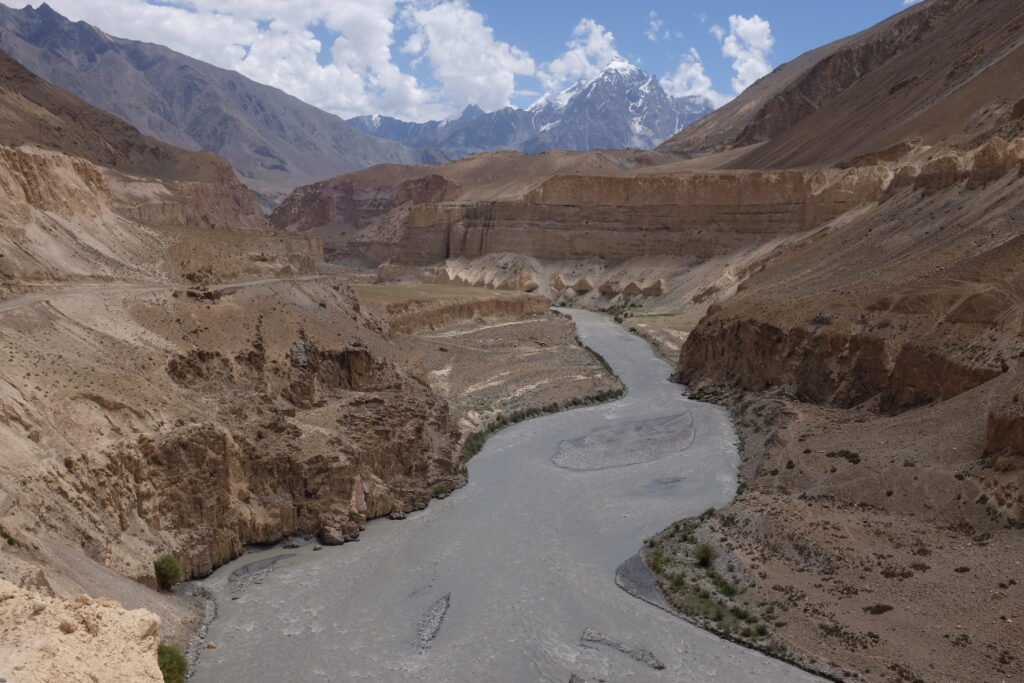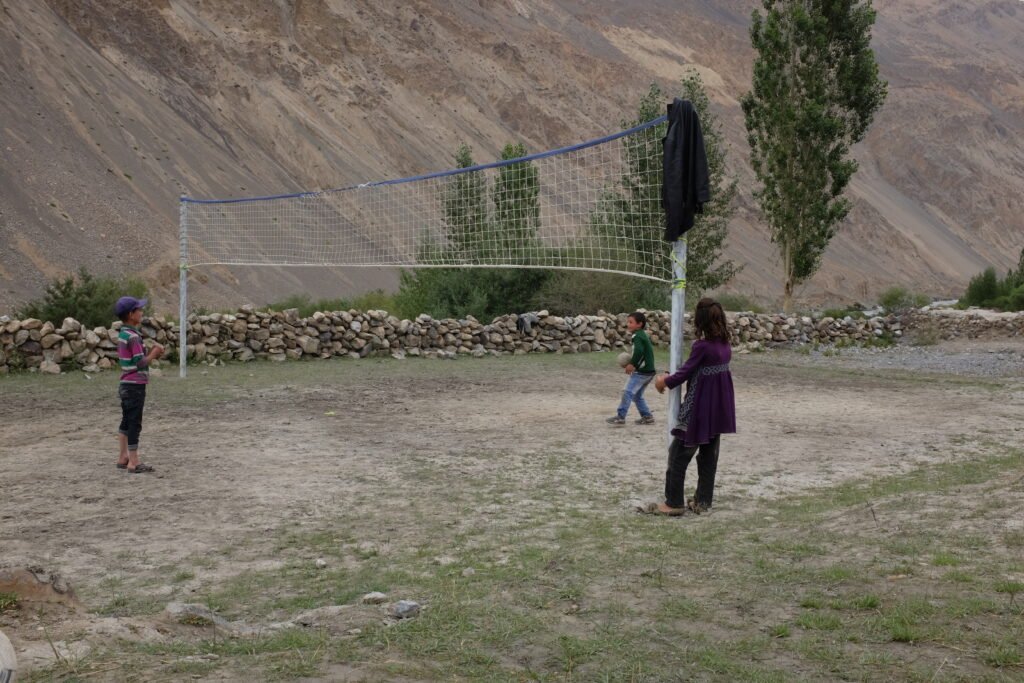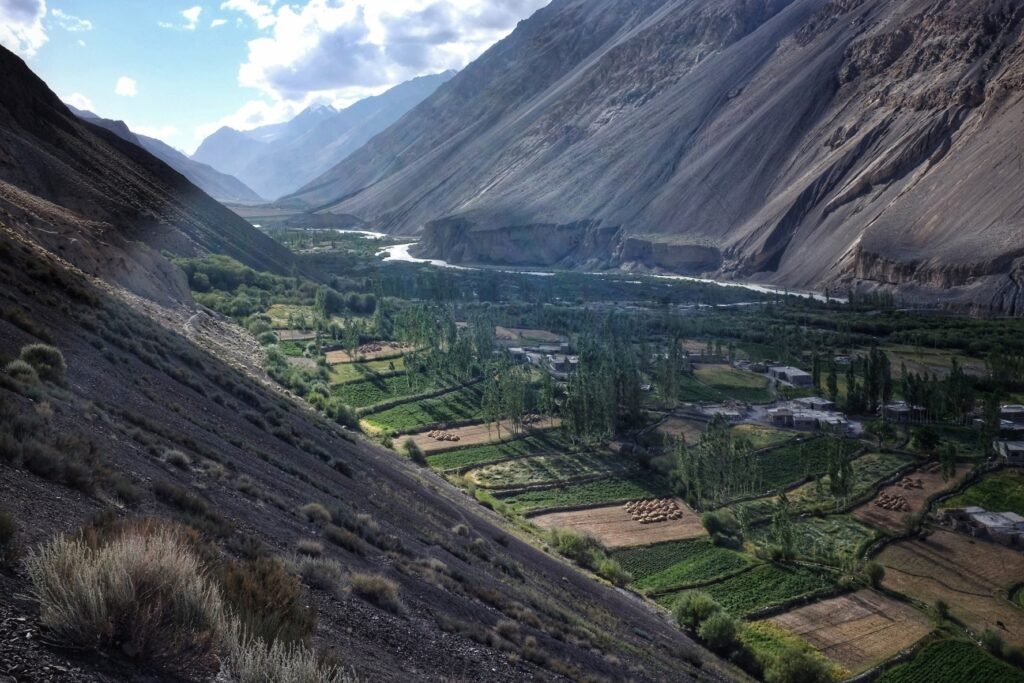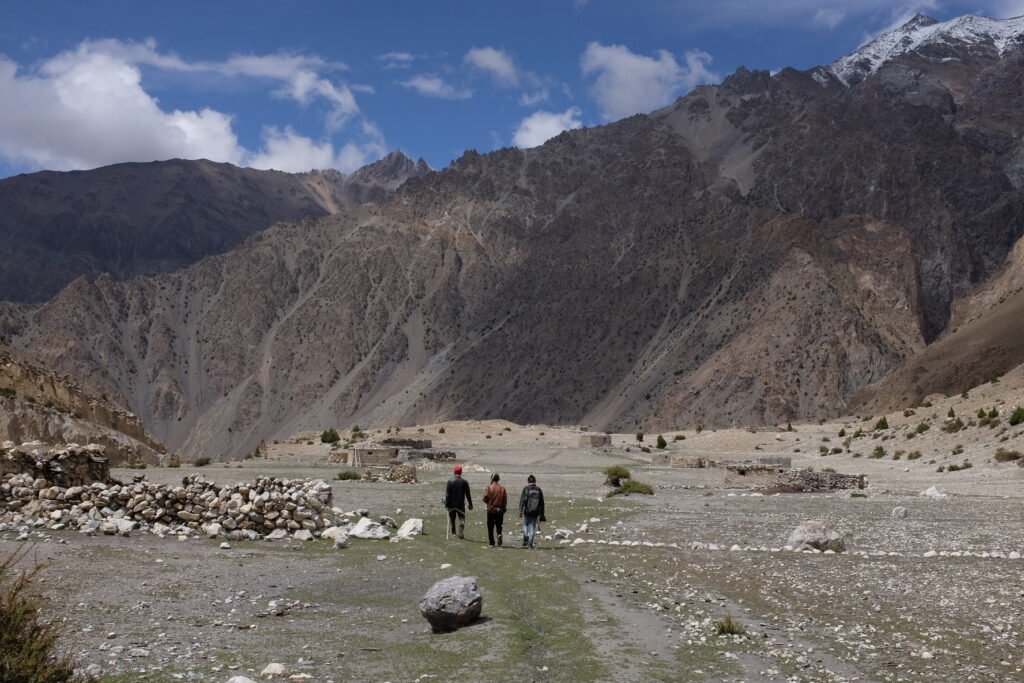Attabad Lake, Ghulkin, Passu, Shimshal. All spectacular places in Upper Hunza, Gojal frequently visited by tourists.
If you venture a bit further towards the Chinese border on the Karakoram Highway, there’s another jaw-dropping beauty you shouldn’t miss.
The remote Chipursan valley lies in the proximity of the last village, Sost on the Karakoram Highway on the way to China. It contains nice scattered villages, and it is the place where I fell in love with Pakistan the first time I visited in 2019. I walked the entire length of the valley, women working on the fields invited me for tea and bread, and I didn’t have to sleep in my tent those five nights I spent in the valley.

How to get there
If you don’t have your own vehicle, the easiest way to get there is with public minivans. They leave early afternoon from Sost bazar, between 1-3pm, depending on what time they fill up. It takes around 4 hours to reach the last village of the valley, Zoodkhun. On the way back, the van leaves early in the morning (5-6 am).
Where to stay
There are a few guesthouses you can stay in Zoodkhun, I recommend Roof of the World guesthouse, where I stayed. It’s basically a homestay, you get to stay in the same building as a local family.
There’s also Pamir Serai, which looked nice too. I don’t know of guesthouses in the other villages.
What to eat
The people of Chipursan valley eat a very healthy diet, typically fresh food from their own gardens, i.e: potatoes, many types of vegetables, leafy greens. They make roti (flatbread) to accompany most meals, and frequently make rice. The drink of choice is a milky tea with salt, similarly to other parts of Hunza. Each family has one or more cows that provide milk. As there are no restaurants in the valley, you will eat at your guesthouse.
When to visit
The last village of the valley, Zoodkhun lies at 3500 metres altitude, and it gets cold…. the best time to visit the valley is from May to October. Prepare for cold nights even in the summer!
The shrine of Baba Ghundi
Perched among the majestic mountains lies the top tourist attraction in the valley: the Shrine of Baba Ghundi. This sacred site, 17 kilometres from the last village of the valley, draws pilgrims and tourists alike seeking solace, blessings, and a glimpse into the region’s rich history.
Legend has it that Baba Ghundi, a mystic and healer, traversed these mountains centuries ago, spreading wisdom and compassion along with Islam among the local communities.
His shrine has since become a symbol of spiritual unity and a beacon of hope for those in need.
Once you get there, you will need to show your passport to the soldiers who man the checkpost. They will keep your documents for the time of your visit. If you’re lucky, you will be able to enter the shrine, but photography inside is strictly prohibited.
Have a tea in one of the houses inhabited by locals.

Other things to do
Go for a short hike up the mountains from a village of your choice.
I did so near the village of Kirmin, and i got to see an amazing panorama of the valley below, in the setting sun.
Visit an old flour mill. Up above Kirmin, you will be able to see how people used to make their own flour. Ask any local for directions.
Watch a game of shooting volleyball. The game has been banned in some countries, as they play it with a stone-like ball. Nevertheless, locals seem to enjoy playing it.



